TASP Joins ASPCA and Other Partners Caring for Hurricane Sandy’s Displaced Pets
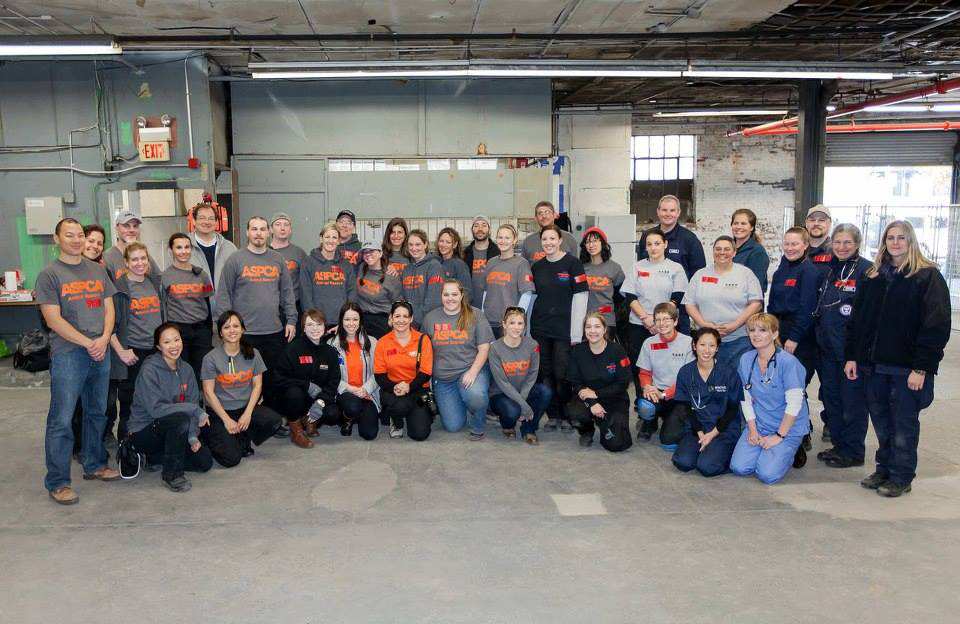
It’s easy to get a TASP Fantasy Photo emailed directly to your inbox and/or a print mailed to your home. Just send us an email at taspinfo@yahoo.com that includes the following
Choose your background(s). CLICK HERE TO SEE THE BACKGROUNDS.
Attach your own photo of your subject(s) taken against a plain background. If you have multiple subjects and want them to appear in the same photo, just send us a photo of each subject separately and we’ll combine them digitally. Already been to a TASP photo clinic in the past? We can look up previous photos of your subject(s) from our archives and use them to create this month’s photo.
Let us know how you’d like to receive your photo:
Emailed .jpg photo @ $10 donation
Mailed hard copy print @ $10 donation (Be sure to supply your mailing address).
Or get both for $15 donation!
Lucite® frame for mailed photos optional @ additional $3 (covers cost of frame and mailing)
*Please be sure your email includes a phone number where you can be reached in case we need to contact you.
TASP volunteers will create your special photo and email you an invoice when it’s ready. Payment can be made through Paypal, Venmo or Facebook Pay. Finished photos will be sent out within 24 hours of payment received.
With so many challenges brought about by COVID-19, more companion animals than ever are going to need TASP’s help to stay safe and healthy. Bringing our friends and supporters this popular activity ONLINE at this time is our way of continuing to finance our mission, while hopefully creating some much-needed smiles. As always, all proceeds are spent on supporting our community’s most vulnerable companion animals. Thanks for caring!
Right now, many folks are reading this message while still in isolation or quarantine or curfew. You may be wondering how The Animal Support Project will be dealing with the changes in all of our lives brought about by the arrival of the Novel Corona Virus and the Random Acts of Crime occurring here in the Capital region and throughout the state. Like everyone else, TASP faces some challenges ahead. We face a loss of revenue from having to temporarily call off our popular Fantasy Pet Photo fund raisers and our tag sales. Add to this an already-evidenced reduction in donations due to the financial stresses many of our supporters are facing after the State imposed mandatory shutdown of so many businesses in NY and then “vampires” decided to destroy what was left of local businesses. These are realities we can’t get around.
That being said, TASP is morphing to adapt as well as we can to continue offering the most support we can muster with available resources. For now, all personal visits to homes have been postponed. We’ve also had to curtail our activities in the local cities after dark due to curfew and the potential risk to our volunteers. That means no adoption home visits, no visits inside the homes of ailing pets. This is the way it has to be in order to reduce risk of infection or injury to our volunteers and our community. By coincidence, our list of adoptable pets is very small right now and their continued care at their foster homes is perfectly alright until the situation eases. And just because we can’t enter a pet’s home doesn’t mean we can’t help pets who need us. As long as our budget allows, we will utilize all available technologies like video, photos, messaging and facetime to confirm financial need and explore the situations of individual pets so they can be directed to whatever proper professional care we can afford. We can also use video and photos to demonstrate and instruct on preventive care practices to help our community’s pet guardians do the best they can for their best friends.
Our ability to pay for professional veterinary procedures at this time is very much in flux with funds temporarily dried up, but TASP is actively seeking grants for worthy purposes like veterinary care and continuation of our Paws2Protect program that provides free Seresto flea & tick collars to financially needy dogs and cats. We also have expanded our pet food pantry stocking program to serve TEN food pantries across Albany, Rensselaer, Washington and Bennington counties. The Paws2Protect and Hoss Fund programs continue to serve as long as resources remain available and if one of our already-submitted grants is awarded to TASP, we will introduce yet another great program to our toolkit, The Vintage Club: offering vital veterinary services specifically for senior pets.
We’ve even found a way we can still run our Fantasy Photo EASTER CLINICS completely online, with an option for a mailed hard copy photo. So if you’d like an Easter/Spring theme photo of your best friend, just scroll down and click for the lowdown on how to make it happen. We’ve posted details of this new fund raising scheme with sample backgrounds right here on the TASP website, taking orders online and accepting payment through Paypal or by check. Depending on how the reopening of NY State proceeds, we may be holiding our photo clinics online for a few more months so stay tuned!
COVID-19 is an unprecedented pandemic situation that virtually every American jurisdiction knew would occur someday. Even so, it would have been financial and logistical folly for any nation to stockpile the number of devices and supplies needed for this scale of a disaster for the 102 years since the last great epidemic, the Spanish Influenza of 1918. The incident command system shared by local, state and federal agencies as well as 1st responders, businesses, nonprofits and institutions across our nation is the modular, scalable method for efficiently and accountably answering the challenges ahead that COVID presents. TASP will do our best to add our compassion, skills, experience and elbow grease to this response to prevent the suffering of our community’s animals. It’s what TASP is trained to do and we’re up to the task.
We wish all of you reading this a safe and healthy path forward. Please be kind, be brave, be objective and be smart. We WILL get through this and we will bring our animal companions with us to a wiser, kinder world.
It is exciting to find so many good books about pet adoption on the market. Those of us who live with adopted pets know how much they mean to a family.
If you have ever opened your heart to an older pet, here’s a book you’ll want to check out:
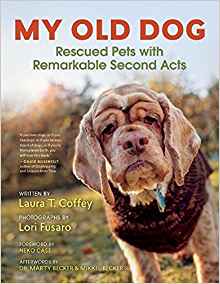 According to William Hageman, Reporter for the Chicago Tribune, “If you read My Old Dog: Rescued Pets With Remarkable Second Acts (New World Library) and don’t want to run out to a shelter and rescue a senior pet, you have a heart of flint.” The book, written by Laura T. Coffey and photographed by Lori Fusaro, champions a sometimes-forgotten segment of the animal shelter population. It contains some truly beautiful photographs of senior dogs and a very nice resource section for folks who make older dogs a part of their life. http://www.myolddogbook.com/
According to William Hageman, Reporter for the Chicago Tribune, “If you read My Old Dog: Rescued Pets With Remarkable Second Acts (New World Library) and don’t want to run out to a shelter and rescue a senior pet, you have a heart of flint.” The book, written by Laura T. Coffey and photographed by Lori Fusaro, champions a sometimes-forgotten segment of the animal shelter population. It contains some truly beautiful photographs of senior dogs and a very nice resource section for folks who make older dogs a part of their life. http://www.myolddogbook.com/
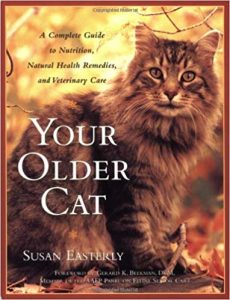 Perhaps the writer of My Old Dog will follow up with an equally well-built version about senior cats? Let’s hope so. In the meantime, we have an excellent book available now, offering the latest information on Senior Cat Care. Written by Susan Easterly, Your Older Cat – A Complete Guide to Nutrition, Natural Remedies and Veterinary Care is a veritable Bible of good information for anyone whose cat is reaching its sunset years. With easy to follow tables, resource lists and helpful hints, this book will help any reader get a grip on old-cat topics like the aging process, preventive care, natural healing options, chronic diseases and senior cat nutrition. The suggested reading list is most helpful and the photos are just beautiful.
Perhaps the writer of My Old Dog will follow up with an equally well-built version about senior cats? Let’s hope so. In the meantime, we have an excellent book available now, offering the latest information on Senior Cat Care. Written by Susan Easterly, Your Older Cat – A Complete Guide to Nutrition, Natural Remedies and Veterinary Care is a veritable Bible of good information for anyone whose cat is reaching its sunset years. With easy to follow tables, resource lists and helpful hints, this book will help any reader get a grip on old-cat topics like the aging process, preventive care, natural healing options, chronic diseases and senior cat nutrition. The suggested reading list is most helpful and the photos are just beautiful.
 At the opposite end of the spectrum, there’s an excellent book on how to raise a great puppy written by Dr. Sophia Yin. Dr. Yin died a few years back, but she left behind her a tremendous wealth of writings about positive methods in pet training based on the latest research. Being a veterinarian, Dr. Yin also tempers her writings with the physical drivers behind behavior. Illustrated profusely with photos and drawings that are easy to interpret, Perfect Puppy in 7 Days – How to Start Your Puppy Off Right not only can help someone raising a puppy to do it right. It also can help the owner of a young dog understand the reasons behind behaviors they may be seeing in their pet, and how they can best modify those behaviors without ruining the dog.
At the opposite end of the spectrum, there’s an excellent book on how to raise a great puppy written by Dr. Sophia Yin. Dr. Yin died a few years back, but she left behind her a tremendous wealth of writings about positive methods in pet training based on the latest research. Being a veterinarian, Dr. Yin also tempers her writings with the physical drivers behind behavior. Illustrated profusely with photos and drawings that are easy to interpret, Perfect Puppy in 7 Days – How to Start Your Puppy Off Right not only can help someone raising a puppy to do it right. It also can help the owner of a young dog understand the reasons behind behaviors they may be seeing in their pet, and how they can best modify those behaviors without ruining the dog.
 Since we like to be even handed in our reviews, we owe it to the felines and their families to mention an equally interesting and well-designed how-to book about cats by Pam Johnson-Bennett: Think Like A Cat – How To Raise a Well-Adjusted Cat – Not a Sour Puss From how to choose a new cat or kitten to how to kitten-proof a home to how to help your vet diagnose your cat’s ailments, this book is the one cat owners will turn to again and again over the lifetime of their cat. There’s some exceptional material in here about how to not only train a cat, but how to modify and even eliminate undesirable behaviors your cat may have developed. Personally we might have liked to have seen a few more illustrations in this book to break up the text a bit and help the more visual learners in our midst to get the message; but with so much valuable information in this book, we can forgive the lack of images and appreciate the treasure between its covers.
Since we like to be even handed in our reviews, we owe it to the felines and their families to mention an equally interesting and well-designed how-to book about cats by Pam Johnson-Bennett: Think Like A Cat – How To Raise a Well-Adjusted Cat – Not a Sour Puss From how to choose a new cat or kitten to how to kitten-proof a home to how to help your vet diagnose your cat’s ailments, this book is the one cat owners will turn to again and again over the lifetime of their cat. There’s some exceptional material in here about how to not only train a cat, but how to modify and even eliminate undesirable behaviors your cat may have developed. Personally we might have liked to have seen a few more illustrations in this book to break up the text a bit and help the more visual learners in our midst to get the message; but with so much valuable information in this book, we can forgive the lack of images and appreciate the treasure between its covers.
TASP gets our share of calls from folks concerned about this or that animal’s welfare in their neighborhood. Whether it’s a neighbor’s dog tied out in weather extremes, or dairy heifers with hip bones protruding in springtime, it’s commendable that people care enough about animals to seek help on their behalf. Sometimes what they’re seeing is actually not cruelty, according to NY State law, and sometimes it is. In the previous TASP newsletter, we talked about how to make change happen at the federal level. I thought it might be a good idea to take it back a notch and talk about state level matters, especially concerning animal cruelty.
When the topic of animal cruelty comes up, sometimes I lose a friend when I explain what TASP can and can’t do, legally. After all, TASP is not the official Animal Control officer for any jurisdiction. We’re educated in Animal Law so we can recognize it when we see it and share information on the topic with concerned members of the public. We’re glad to communicate what we’ve learned to enlighten others, but we don’t have the authority to remove animals from premises without the permission of the animal’s owner or of law enforcement officials responsible for the location where the suspected cruelty is taking place. We also don’t have the legal authority to demand that law enforcement remove an animal from its owner, even when cruelty is suspected. And we can’t legally represent you to law enforcement and make a formal complaint on your behalf about something you’ve witnessed and we haven’t. All we can do is what YOU can do if you suspect animal cruelty:
Look carefully at the big and small picture and compare what you see to Article 26 of the NY State Agriculture and Markets Law. Remember, not everything that looks like cruelty is legally cruel under our existing laws. In this state, animals are still considered the property of their owners, just like a car or a ladder. Companion animals have a bit more protection under Article 26, but even at that, the protections are in some cases vaguely worded and up to the interpretation of officers, attorneys and judges.
Not all cruelty or neglect is intentional and not all cases of neglect are considered by law enforcement to be prudent to prosecute, from a resource-availability perspective. An elderly pet owner who isn’t able to trim their pet’s nails or whose dog/cat’s fur is matted isn’t necessarily intending to hurt their pet. On the contrary, they may be distressed, embarrassed and/or ashamed that they aren’t able financially or physically to keep up with the animal’s care. It may be their only companion and so they may be reluctant to let it go. There may be no relatives or neighbors nearby who can/will help them with the tasks, or they may not understand the physical discomfort that long nails or matted fur can cause an animal. The owner’s arthritis, poor eyesight, lack of resources or the onset of their or their loved one’s illness may also be legitimate reasons for a lapse in a pet’s care. Swooping in to judge/accuse/publicly shame the owner in such cases without knowing the backstory adds to the tragedy instead of helping overcome the issue for the long term. Those are the cases where TASP might be able to help by paying for grooming or vetting for that pet. Or, if the situation is a sinking ship, TASP may even offer to help the owner place the pet in a more secure home so the owner can move on to assisted living. But before you set us on that pet owner, why not drop by with a cup of coffee, a little tray of cookies or some animal-related trinket that shows you care, so you can get acquainted and learn more about why your neighbor’s animal looks the way it does and how we outsiders might be trusted as worthy to help?
I actually had a very nice lady call me once with great concern about abused dairy cattle on a farm near where she lived. It was spring and she said she was seeing the female cattle standing outside with hip bones protruding. She said they looked starved and were all muddy and she was sure they were being horribly neglected. She didn’t stop in to talk with the farmer and she didn’t research on the internet to learn more about how to judge a cow’s body condition score. She just drove past the farm day after day on her way to and from work and with each pass, she got herself more and more worried about these poor cows. When she called me to talk about it, I assured her I would take a look, but that these cows were probably fine, given it was calving season. I gave her a brief rundown in what makes cows look the way they do so she could understand why what she was seeing might be expected at this time of year. And when I drove over to take a peek, my hunch was confirmed; there was no shortage of food available to those cows and they were happily chewing cud when I got there. This lady was a very well meaning person unfamiliar with dairy farming. She was judging the appearance of these cattle against the condition of her pet dog and saw a disturbing contrast. But those familiar with dairy farming will tell you the cow’s physical structure is far different from any dog’s (let’s start with just the number of stomachs for an example) and a heifer’s body condition fluctuates with the time of year and her calving/lactating cycle. As it turns out, these cows were in fine condition; they had just been calving and that takes alot out of the system so the Moms all naturally looked a little droopy around the hip bones at that time. There was no law broken here.
So here’s a test for you…. a couple of photos of a suffering dog. Is it a case of animal cruelty/criminal neglect?
Answer: Not. This dog had a loving owner who spent thousands of dollars in her attempt to overcome her dog’s allergies. She trusted her veterinarian to diagnose and treat this dog, but unfortunately, this particular vet was having difficulty getting a grip on the case. The stack of invoices and reports in this little guy’s vet history attested to a year’s worth of repeated trips to the vet, each time with a new proposed treatment that was supposed to stop the tormenting itch. By this time, the dog had ulcers from too many steroids, an antibiotic-resistant staph infection from too may antibiotics and he was half his normal weight. At the recommendation of her vet, his owner was about to euthanize the 2 year old West Highland Terrier when she reached out to her coworker who reached out to TASP. We had the dog properly diagnosed and treated by another vet with more experience in helping animals with severe allergies. The dog’s Mom gratefully surrendered him to TASP because she didn’t feel equipped to deal with the care he would need going forward. He’ll always need allergy shots and carefully controlled diet and environment, but here’s a recent photo of Spencer …..he actually needs regular haircuts now! 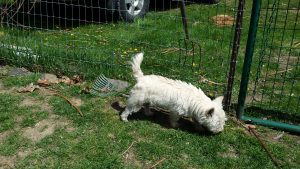
If we pass judgement just by what we see without digging deeper to obtain more context, we can deceive ourselves. But let’s say you did your homework. You’ve made unsuccessful attempts to clarify/rectify the situation. Perhaps, in spite of your asking your neighbor to clean up their yard, the smell of feces and/or garbage coming from the person’s back yard where their dog is tied is enough to gag a maggot; so you know Article 26 Section 353b.3.b has been violated. Or worse yet, you’ve witnessed the animal being beaten or otherwise abused (Article 26 Section 353 and/or 353a). In other words, you are convinced that you have a case of unjustifiable cruelty. Here’s what you need to do next:
First, do NOT change the condition of any of the animals on that property. Don’t groom the matted one, don’t trim the nails or make any improvements to the suffering animals. Sound cruel? Wellllll, if you change the condition of any of the suffering animals before they can be witnessed and professionally documented by a vet/officer, you’ve changed the evidence of the crime. Instead, start documenting the cruelty you suspect. In a perfect world, this would entail taking photos or video of the situation. But the important thing you need to know is, you aren’t legally allowed to step onto the property of others of whom you suspect cruelty without their inviting you to do so. This reality may be the factor that determines you aren’t able to gather images of the animal you think is suffering. If that’s the case, write down the dates and times when you witness cruelty occurring and write detailed descriptions of the incident: what kind and how many animals and how are they being abused? What evidence are you seeing? Be specific. Try to match up what you’re seeing with the actual section and subsection of Article 26 that applies. List any other witnesses present and try to be objective in your description. These notes may be reviewed by law enforcement and may eventually be considered evidence in a trial if the case gets that far.
With your evidence in hand, call 911 or visit the local police department and report the suspected cruelty. You need to file an official complaint with the local police, and you may need to insist that they take your complaint, depending on how animal-friendly the officer on duty is. After that, the case will be reviewed and an officer may visit the suspect’s home, or they may send the dog control officer (if it’s a dog that you are concerned about) to see if they see any evidence of a cruelty issue.
Don’t be surprised if the officer/DCO points out to the suspect that they are in violation of one or more sections of Article 26, and offers the suspect an opportunity to correct the situation. This is akin to an officer offering you a warning instead of a citation for speeding in your car…..and based on what the officer learns when visiting the suspect, he or she may feel it makes good sense to give the suspect a chance to get things back under control over a given period of time instead of immediately drawing them into the criminal justice system. Now, some people may say, “How can you equate suspected animal cruelty with my innocent speeding violation?” The answer is, your vehicle weighs ALOT, and when it’s going faster than recommended, the chance of your imposing cruelty on an innocent animal/human who happens to be in the wrong place at the wrong time is actually quite high. That’s one reason why we have speeding laws. But if an officer looks you in the eye, communicates with you, looks around your vehicle, checks your past record and feels you would change your behavior after a warning, then they’re entitled to make that judgement and give you the opportunity to self-correct. This saves valuable police and court resources for the really heinous cases that absolutely require immediate prosecution: the person who lights the stray cat on fire, the person who beats a pet to death with a shovel, the person who slashes their neighbor’s pet horse in its stall, or the person who blatantly refuses or is unable to heed the warning of an officer who has already given them official warning of their violation.
The New York State Humane Association wrote the book on investigating animal cruelty. Literally. CLICK HERE to read their indepth procedural layout for animal cruelty investigators. This is the book by which many police departments learn how to investigate Animal Cruelty, so in becoming familiar with this manual, you can help your officers do the best job of bringing an animal abuser to justice with a case that isn’t likely to be thrown out of court.
We’re a nation of laws. They’re certainly not all perfect but they’re part of a system that attempts to provide at least a bare minimum of protection for the vulnerable. The tricky part of all this from the perspective of law enforcement is protecting the rights of animals without violating the rights of humans. As animal lovers, it’s easy for us to confuse our own standards of care for our pets with what is legally required. This is one of the root causes of misunderstandings and polarization among the community. By becoming more educated ourselves about the legal side of animal welfare, we can help law enforcement do a better job and we can also offer our law makers concrete suggestions for new bills that can update and improve laws. And that’s how we can make our community a better place for all species.
I just wanted to thank you so much for all you did to help us save Rocky from NYCACC and help him recover from kennel cough without infecting our other dogs. He is a dream and we would not have been able to do it without your knowledge and help! You are an amazing resource for our community! – Lisa
Thank you for a wonderful time and your special treatment of our little old man – Barbara
You guys are the BEST! Thank You. – Johanna
Jack Passed away on July 31st very unexpectedly…….I cannot begin to tell you how precious all of the photos we have had taken are to me now. – Sarah
Thank you so much I just called them she has an appointment for tomorrow at 3:15. – Amie
I just want to say thank you so much God bless you for helping baby and I just wanted to update you with her how she’s doing and she is now walking again thank God…….I wasn’t able to have children do to my disease and they are my children…….and they are my world I mean that – Chrissy
….sometimes he regresses but I’m practicing and practicing and he’s getting better and better thank you again! – Ada
After paying rent and utilities I struggle with the other monthly expenses. Thank you so much! – Kathleen
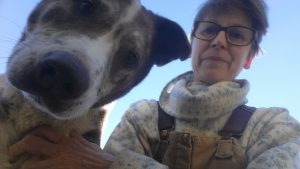 Well, here we are releasing the 5th edition of our “Out of the Box” e-newsletter and I still haven’t run out of things to tell all of you! In fact, each day brings more voicemails, emails and text messages presenting TASP with more requests for help of every sort. I have to admit, 2018 has been one heck of a challenging year for our little organization, with the loss of Mitch and the exponential growth in the number of requests we’re receiving. But we’re a sturdy, stubborn bunch and we keep our noses pointed into the wind, moving one foot ahead of the other, one project after another.
Well, here we are releasing the 5th edition of our “Out of the Box” e-newsletter and I still haven’t run out of things to tell all of you! In fact, each day brings more voicemails, emails and text messages presenting TASP with more requests for help of every sort. I have to admit, 2018 has been one heck of a challenging year for our little organization, with the loss of Mitch and the exponential growth in the number of requests we’re receiving. But we’re a sturdy, stubborn bunch and we keep our noses pointed into the wind, moving one foot ahead of the other, one project after another.
These days at the Plasse ranch, when I’m not working at my paying job or tending to TASP matters, I’m caring for a number of my own and TASP’s hospice dogs and cats. Dear old Otis, our 24-year-old hospice cat, finally passed over to the other side less than a month ago. Meantime, Guidry, the Catahoula puppy I brought home from Louisiana after Hurricane Katrina is now pushing fourteen and losing control of his back end. I thank God every morning that he’s able to get up with assistance and walk just a bit on the farm he so conscientiously patrolled all these years. And I thank God I have a job that allows me the privilege of being able to care for his needs at this stage of his life, and a husband who is kind enough to hand-feed Guidry when I’m not home and to help me rearrange our home’s entire basement level to accommodate this beloved old dog’s condition. I know there are people who love their animals as much as we do, but who aren’t as fortunate as we are. My heart goes out to these people because I know what it feels like when an animal leans its head up against me asking for help. How would I feel if I couldn’t afford to respond?
Believe it or not, I still occasionally encounter people who give that “deer in the headlights” look when I tell them what TASP does. And I can understand why some folks might not readily relate to the concept of helping animals and their owners through tough times. If you were fortunate enough to be born into a secure home and have not experienced the loss of your security up till now, it might be hard for you to wrap your head around all the changes a person is subjected to when their life is interrupted by a health issue, a divorce, the death of a spouse or loss of a job. Those changes can be more readily comprehended and rationalized by a human, but what about their pet? A conversation I had recently with a nice lady on the phone illustrates this perfectly, I think. The tearful call came one night while I was working through the day’s voicemails and emails while simultaneously choking down a bowl of soup for my dinner.
This woman from a county about an hour and a half from my house was sobbing that she’d been sent to us by her local shelter. She had contacted them looking for help for “Hennessey,” a female pit bull she’d rescued from a neglectful home two years ago. The dog was very weak, not eating for the past couple of days. When she originally took the dog in, she had her spayed and vaccinated by a local vet hospital and Hennessey had been healthy right up until this problem occurred. But between then and now, this lady had endured four surgeries; and what had been a financially secure home turned into a place where there was barely enough to go around even when things were all running smoothly. With Hennessey suddenly becoming ill, there was no emergency fund left to treat her at a vet. I listened as Hennessey’s Mom told me her story, and then my heart sank when she said, “And then the guy at the shelter told me, ‘People who can’t afford to care for an animal shouldn’t have one.’ You know, when I rescued Hennessey, I COULD afford a dog! I never planned on getting hurt and I never dreamed I’d be begging for someone to help me get her vetted now!”
These are the situations that deserve “out of the box” consideration. It’s an adult pit bull that is loved and that has an owner who wants to keep her. Should we send that dog into the shelter system and hope she finds another home where her owner won’t someday get sick and have trouble paying a vet bill? Or should we just help this pet owner through the current crisis and let the family resume life together, not overburdening the shelter with another pit bull? After all, Hennessey’s Mom was able to afford the day to day care of this dog and would probably even be able to afford vetting if this need hadn’t just occurred at the same time she was healing from her last surgery.
More and more of these crises are being brought to our attention now because we’ve been making happy endings for at-risk pets for over ten years….and good news is contagious. We’ve done our best to offer whatever help we can remotely over the phone and internet to these distant counties. Proof of financial need can be texted to us; payment of a vet bill can be made over the phone in most cases. We’ve mailed pet store gift cards to people needing supplies where we can’t reach them and we’ve had supplies shipped directly to needy animals from places like chewy.com. We’ve shipped first aid supplies to the cat whose rearend was ripped up by the new family dog and we’ve helped explain in layman’s terms things like abcess care, second intention healing, tapeworm, flea prevention, kidney failure and amputation to worried pet owners facing big and small decisions. We’ll keep on fielding the requests from wherever animals are at risk in the Capital region and do our best to respond with enduring solutions. If we can’t be there personally, then we’ll work with those who are there……like the man in Amsterdam who requested help for an injured cat belonging to his neighbor who speaks Ukranian fluently but has trouble with English. I have strong faith that TASP will find ways to grow support in the areas farthest from our reach through partnering with other individuals and groups, so if you know someone who might want to team up with TASP in places like Fulton, Montgomery and western Schenectady counties, please have them contact TASP through our website, or call me at 518-727-8591. After all, TASP can’t be everywhere all the time, but with so many caring animal lovers in our region, there’s no reason why we shouldn’t work together to prevent an animal’s suffering when their owner hits on hard times.
Thanks from the heart from all of us at The Animal Support Project for caring enough to open and read our messages, and for supporting our mission. We wish all of you and your families: two-legged, four-legged, furry, hairless, scaled and feathered, warm-blooded, cold-blooded, old and young, a very beautiful holiday season and a new year that fills you with joy, prosperity and gratitude. Will be back in touch in the spring with more good news for y’all.
High Fives…….
…..to the wonderful businesses in the Capital Region who prove they care by partnering with TASP:
Adirondack Veterinary Clinic
Animal House Dog Grooming
Animal Wellness Veterinary Services
Aquaduct Veterinary Hospital
Benson’s Pet Centers
Berkshire Humane Society
Bloomingrove Veterinary Hospital
Borador Animal Hospital
Bought Veterinary Clinic
Brunswick Agway
Brunswick Animal Hospital
Campbell Supply
Cambridge Valley Vet
Canoe Associates Insurance Agency
Catskill Animal Hospital
Cobleskill Vet Hospital
Conceptual Images
Crawmer’s Animal Training
CourierTronics
Duncan & Cahill Contractors & Engineers, Inc.
Fane Construction
Fenimore Asset Management
Fuzzybutts Grooming
General Electric
Hallam ICS
Healthy Pet Center
Higher Ground Farms
Honey Badger Farms
Hoof n’ Paw Vet Services
Hoosic Veterinary Hospital
Infinity Pet Services
In The Comfort of Home
Karen L. Marbot, Attorney at Law
Kat’s Bed n’ Biskit
LaFave, Wein and Frament, PLLC
Lifetree Pilates
Latham Animal Hospital
Lowes Home Improvement Center, Latham, NY
Lydall Corporation
Mud Hollow Farm
Oakwood Veterinary Clinic
Out of the Basement
Pet Supplies Plus
Quest Plumbing
Regeneron
Riverside Vet Hospital
Ross Valve
Schoharie Vet Hospital
Schopf Law
Stewarts
The Animal Hospital
The Village Animal Clinic
Tub 64 Pet Grooming
Uncharted Wild
Union Street Veterinary Hospital
Upstate Veterinary Specialties
VCA Brown Animal Hospital
West Mountain Animal Hospital
Whalen Tent
Wiley Brothers Hardware & Building Supply
WLR Embroidery
Please consider giving them your business in return for their commitment to TASP’s mission.
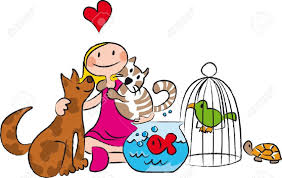 We’ve all seen the movies and read the books about animals and people living happily ever after. And animals really do enrich our lives, no matter what the species. But all living things have physical and emotional needs. They’re not appliances we can turn on and off as we find necessary. They need the right food, the right medical care and the right enrichment to live an acceptable quality of life…..and most importantly, they need our time and attention. Once we bring a pet into our lives, we become their primary source of these things. They depend on us to know what they need because they can’t always tell us themselves. In this issue of our newsletter, we thought it might be helpful to use the internet to learn in advance what others have to tell us about the animals we want to make a part of our family.
We’ve all seen the movies and read the books about animals and people living happily ever after. And animals really do enrich our lives, no matter what the species. But all living things have physical and emotional needs. They’re not appliances we can turn on and off as we find necessary. They need the right food, the right medical care and the right enrichment to live an acceptable quality of life…..and most importantly, they need our time and attention. Once we bring a pet into our lives, we become their primary source of these things. They depend on us to know what they need because they can’t always tell us themselves. In this issue of our newsletter, we thought it might be helpful to use the internet to learn in advance what others have to tell us about the animals we want to make a part of our family.
The most common mistakes new animal owners make…….
Thinking of acquiring a cat? CLICK HERE to learn how to avoid the most common mistakes new cat owners make.
You say you’re smitten by the puppy you just met at the shelter? CLICK HERE to learn from the mistakes of others.
You always wanted an equine and now you’ve got the opportunity to achieve that dream. Before you do, CLICK HERE to prepare yourself in advance.
Ferrets, rats, snakes, lizards, turtles……are they all low maintenance pets? CLICK HERE to find out.
Exotic birds are entertaining, colorful, and some can even talk to us. But there’s more to owning a bird than just putting food and water in a cage. CLICK HERE to find out what you may not have considered about owning a bird, before you bring one home.
 As pet owners, we sooner or later will be subjected to cleaning up a very stinky mess left behind by our canine or feline friend. It’s important to learn how to interpret the language of poop so we can be an advocate for our animals who can’t necessarily describe their situation to the vet.
As pet owners, we sooner or later will be subjected to cleaning up a very stinky mess left behind by our canine or feline friend. It’s important to learn how to interpret the language of poop so we can be an advocate for our animals who can’t necessarily describe their situation to the vet.
Did you know that a fecal sample is the window to what’s going on inside your pet? Knowing what different kinds of BM mean can help you save your pet from suffering; and a little bit of time spent being a “scat detective” can even save a life.
The AKC wrote a terrific article about this very subject. And although it’s written from the perspective of a dog lover, the general information it offers about the features of feces can be generalized to other species like cats and horses.
https://www.akc.org/expert-advice/health/doggie-diarrhea/?utm_source=newsletter&utm_medium=email&utm_campaign=yourakc-20161121




Copyright © 2013-2024 | The Animal Support Project Inc.
